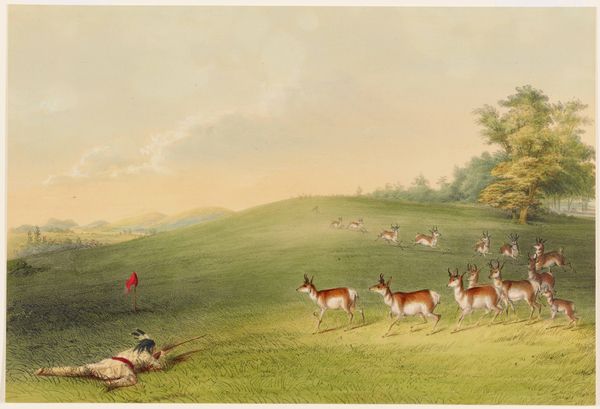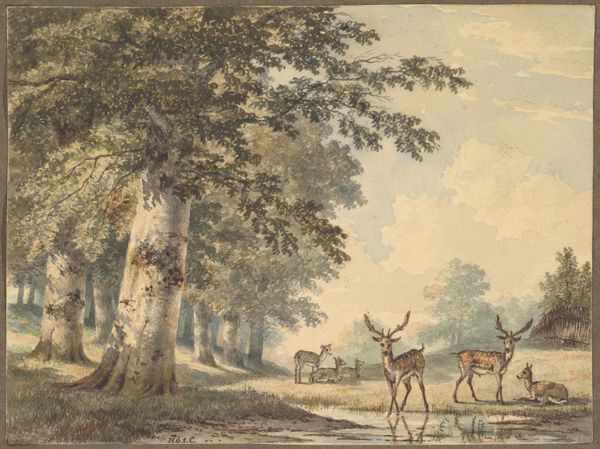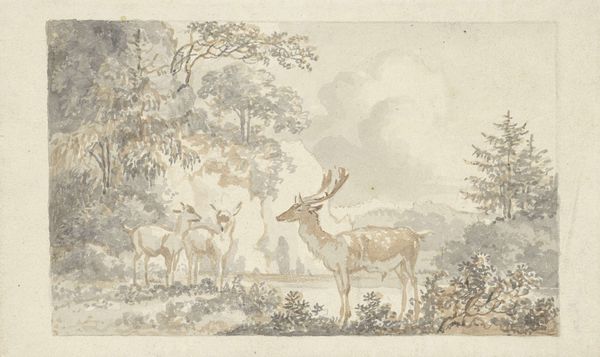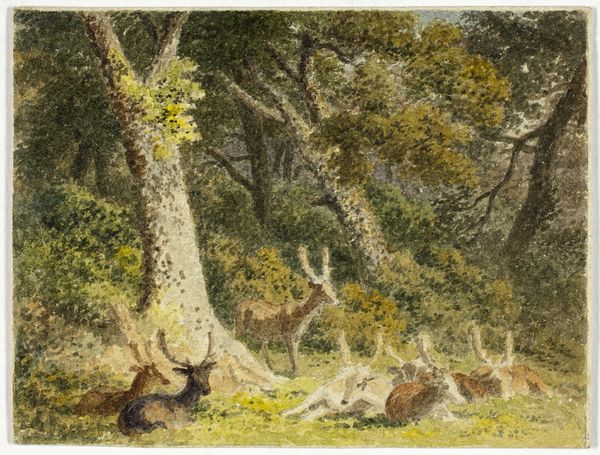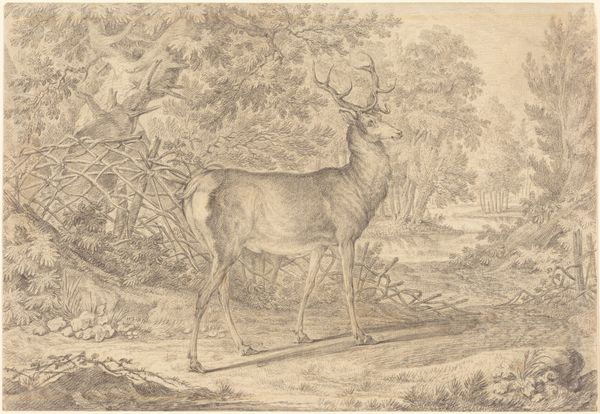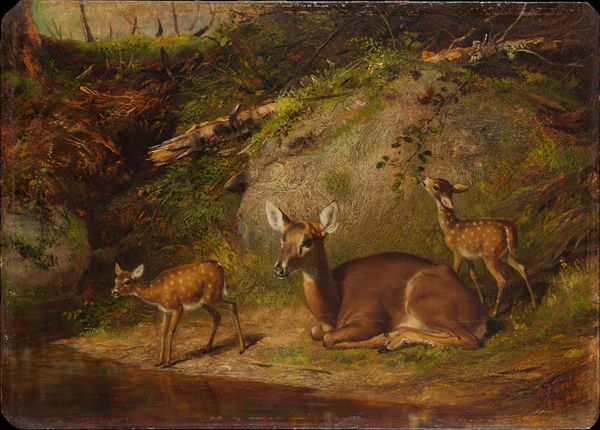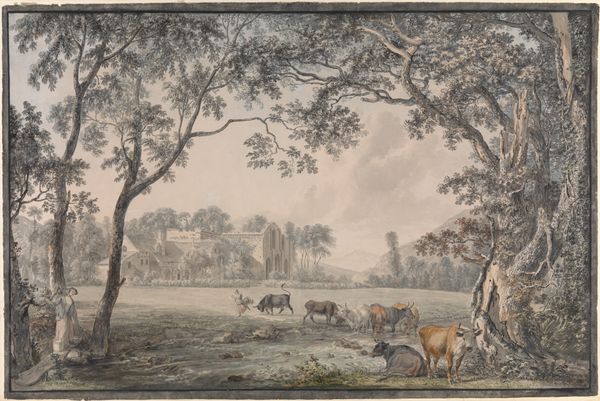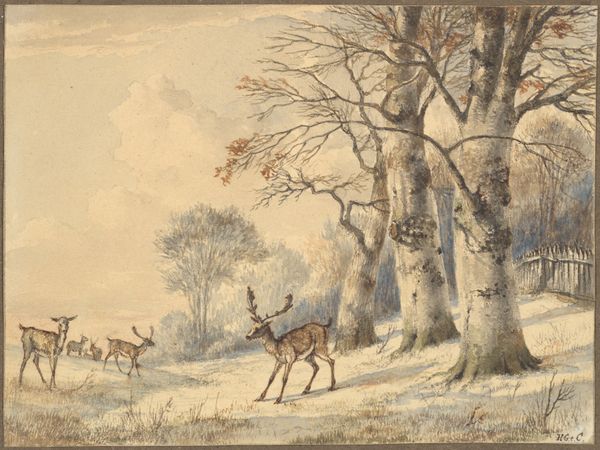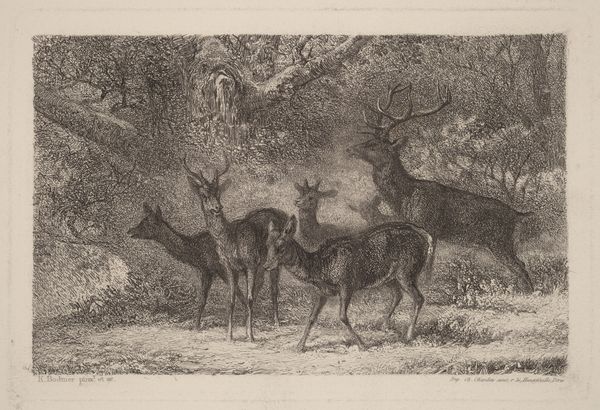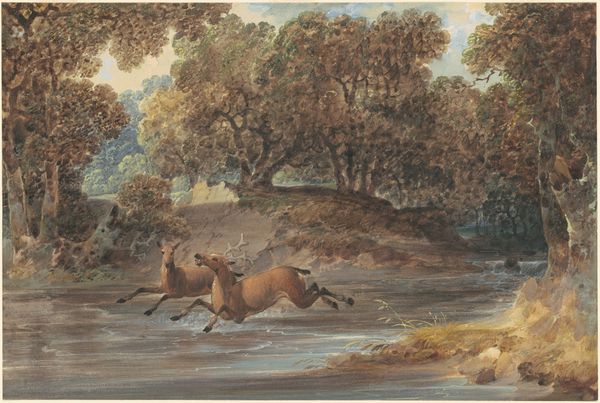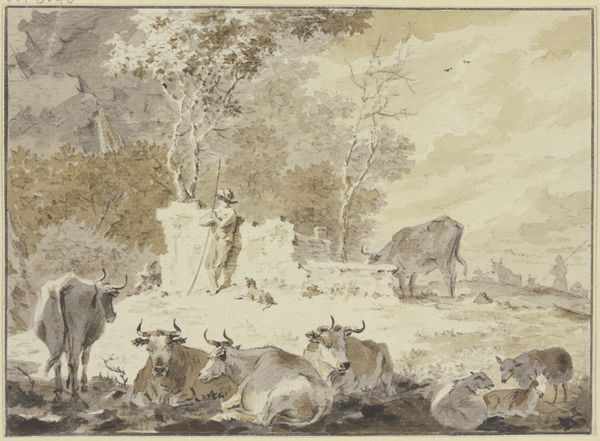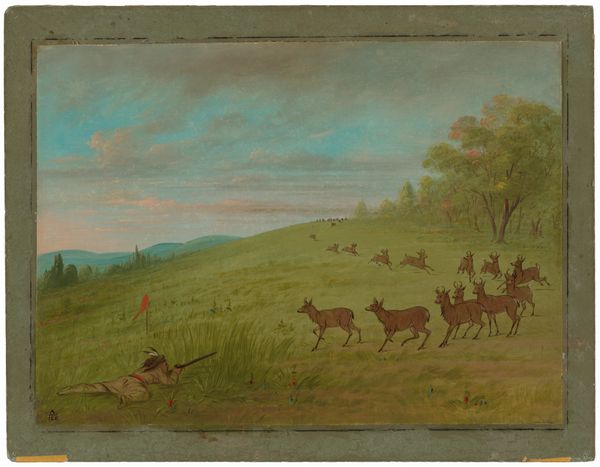
drawing, watercolor
#
drawing
#
landscape
#
watercolor
#
romanticism
#
watercolour illustration
#
genre-painting
#
academic-art
#
botanical art
#
watercolor
#
realism
Dimensions: sheet: 38 × 50 cm (14 15/16 × 19 11/16 in.)
Copyright: National Gallery of Art: CC0 1.0
Curator: Robert Hills created this watercolour drawing titled "Stags in Knole Park, Kent" in 1839. What is your initial reaction to it? Editor: It evokes a powerful sense of melancholic peace. The muted tones, the resting stags – it speaks to a certain romanticized view of the English countryside, yet also hints at something more complex beneath the surface. Curator: Yes, the colour palette is carefully orchestrated to convey a prevailing atmosphere. Hills uses subtle gradations of browns and greens, skillfully manipulating the watercolour medium to capture the varied textures of the landscape and the animals. The stags are meticulously rendered, aren’t they? Editor: They are. It seems the stag were often symbolic of masculine power and nobility at the time, especially within the context of the landed gentry and their estates, of course. But notice their repose: they're not actively displaying that power. Perhaps this reflects anxieties about class and societal changes during that era. Were these landed estates really as invincible and timeless as they presented themselves? Curator: An intriguing reading. One can certainly see that tension when we consider the placement of the stags within the composition. They are positioned in the foreground, yet the landscape dominates the visual field. The artist uses the arrangement to underscore the relationship between nature and the domesticated, perhaps hinting at humanity’s intervention in these once truly wild spaces. Editor: Exactly! And Knole Park, as a historic deer park, is inherently shaped by human activity and aristocratic power structures. These 'natural' settings were rarely untouched wildernesses; they were products of specific social forces. So, are we really admiring a scene of rustic serenity, or a carefully constructed performance of it? Curator: The performance aspect is very interesting. Look at the light, how it drapes across the scene and bathes the stags and background in an almost theatrical way. This controlled use of light creates dramatic effect, subtly shaping our perception of the animals. Editor: Overall, despite its technical refinement and outward charm, the artwork does make you consider the power dynamics embedded within landscape traditions. Curator: I agree; examining the piece through the lens of visual technique, together with the contextual elements, enriches the aesthetic encounter so considerably.
Comments
No comments
Be the first to comment and join the conversation on the ultimate creative platform.
